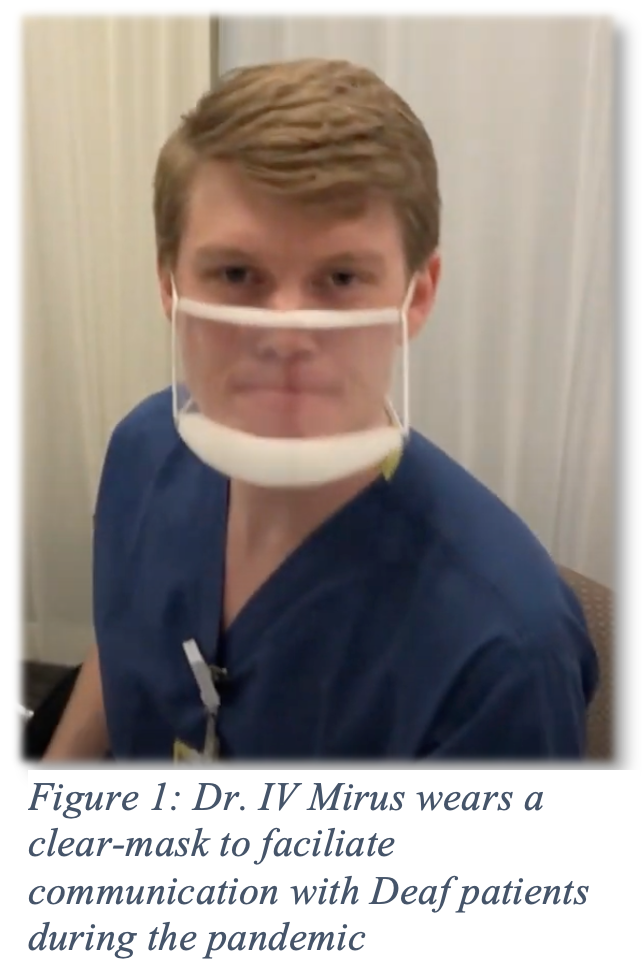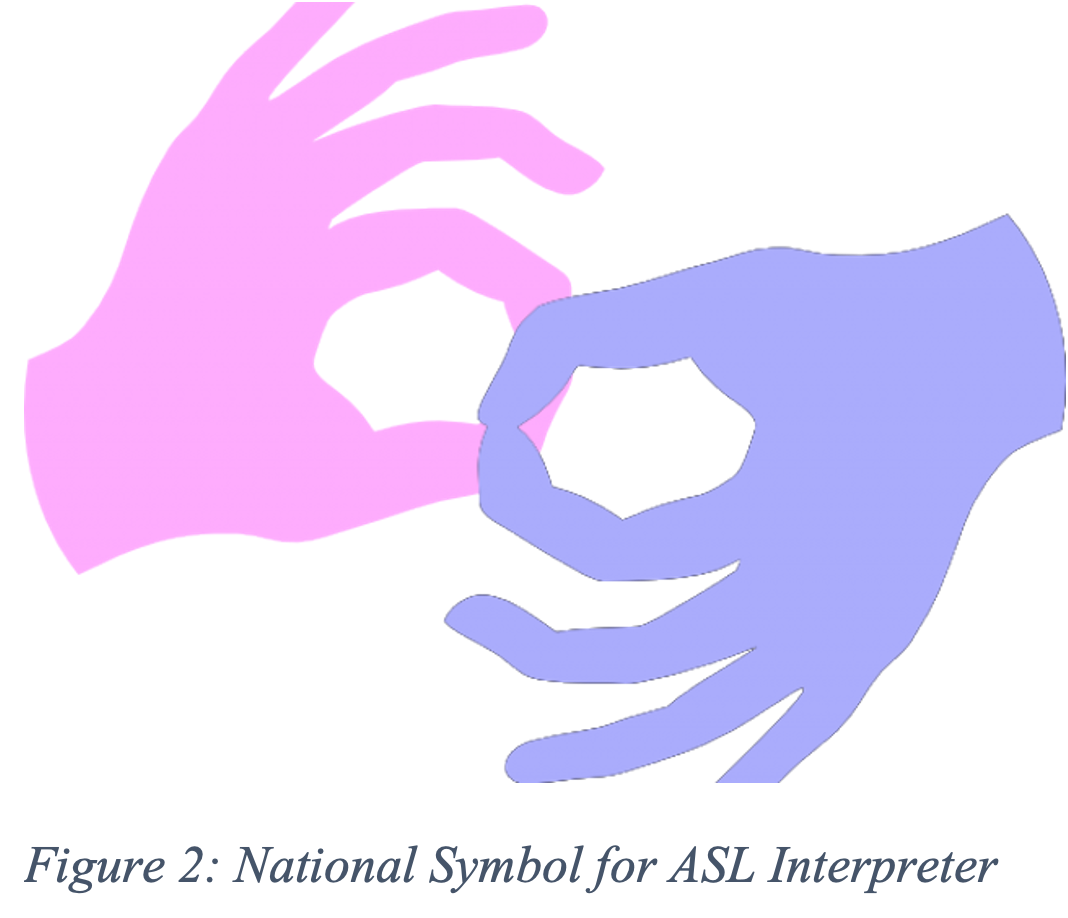Authors: IV Mirus, MD (@IVMirus, EM Assistant Professor, UT Southwestern); Jason Rotoli, MD (Associate Program Director, EM Assistant Professor, University of Rochester); and Luke Johnson, MD (EM Resident Physician, University of Rochester) // Reviewed by: Edward Lew, MD (@elewMD); Brit Long, MD (@long_brit); Alex Koyfman, MD (@EMHighAK)
Case:
A 68-year-old woman presents by ambulance for evaluation after a fall down stairs. The patient had a fall and was found by the stairway. EMS has not been able to obtain a history or circumstances surrounding the fall because the patient is deaf and uses sign language.
EMS reports the patient to be alert, in acute pain with obvious deformity to the left wrist (with a splint in place), and has a C-collar in place for precaution. A peripheral IV has been inserted.
Questions:
- How will you obtain a history?
- How can you establish rapport despite the communication barrier?
- How can you accommodate for the patient being deaf while addressing her injuries?
Capital “D” vs. Lowercase “d”
Deaf and hard-of-hearing (HOH) individuals make up around 16% of the U.S. population. Many people in this group primarily use American Sign Language (ASL) as their primary language, making it the 3rd most used language in the U.S.1 Deaf culture is the culture surrounding this group of individuals who primarily use ASL, have similar life experiences, and have some degree of hearing loss. Capital “D” Deaf indicates those who identify as a member of this unique culture, whereas lowercase deaf/hard-of-hearing typically refers to those with hearing loss who identify as a member of the hearing world.1-2
Similar to other minority cultures, members of the Deaf community experience oppression in many facets of everyday life. One form of oppression is assimilation into a “hearing-world.” This is most pronounced within the educational and medical communities where the needs of those who are Deaf are often unrecognized and unmet. There is often an emphasis on oralism, the use of speech and lip-reading rather than sign language, in these settings. Additionally, Deaf people are often denied access to adequate communication by neglecting or refusing to provide ASL interpreters.3-4 The medical perspective of deafness – being a symptom of a deficit that needs to be fixed – has dominated the medical community. This perspective towards Deaf individuals is harmful, fosters mistrust of the medical community, and contributes to the disparities in access to healthcare.3-4 One such example is the continued use of “hearing-impaired” when referring to a member of the Deaf community. While a hearing person with acquired hearing loss may identify as being impaired, those in the culturally Deaf community do not experience this loss or feel impaired; the term hearing-impaired can be seen as offensive to the Deaf person and should not be used to describe this group of people.5
While the Deaf community is a legally protected group under the Americans with Disabilities Act, many do not view their deafness as a disability or as a hardship upon their lives. In fact, many Deaf individuals view their deafness through a cultural lens and are proud of their deafness; they prefer to be referred to as a Deaf or hard of hearing patient. The aforementioned language is an example of “identity-first” language and is also preferred by other groups such as in the autistic community. Those with hearing loss who do not identify as a cultural member of the Deaf community may instead prefer person-first language. “Person-first” language describes people without defining them by their disability.6-9 An example of a person-first description would be referring to a cerebral palsy patient as “Mr. X is a person with cerebral palsy” instead of “a cerebral palsy patient.”10
Barriers to Healthcare & the Emergency Department
Patient-centered care, defined as providing care that is respectful and responsive to individual patient preferences, needs, and values in order to guide clinical decision making, has had positive impacts on the health of patients while lowering healthcare costs.11-12 Lack of patient-centered care when caring for Deaf ASL users is detrimental. For example, focusing on their deafness as a symptom is rarely helpful in identifying an emergency condition and may convey negative attitudes to Deaf patients.
The Deaf community experiences significant barriers when it comes to interacting with the healthcare system, the largest being communication. These barriers contribute to health disparities in disease outcomes and preventive services among the Deaf compared to the general  population.13-14 For example, the Deaf population is less likely to be able to access preventative care or utilize primary care providers.15 They are also twice as likely to utilize the Emergency Department (ED), have more emergency diagnostic testing and imaging ordered, and have longer ED door-to-disposition times compared to the hearing population.16-17 Higher rates of ED utilization further diminish health outcomes leading to more admissions at higher cost.18
population.13-14 For example, the Deaf population is less likely to be able to access preventative care or utilize primary care providers.15 They are also twice as likely to utilize the Emergency Department (ED), have more emergency diagnostic testing and imaging ordered, and have longer ED door-to-disposition times compared to the hearing population.16-17 Higher rates of ED utilization further diminish health outcomes leading to more admissions at higher cost.18
Research demonstrates that this population is the non-English speaking minority group at greatest risk for miscommunication with their health providers.19 Poor patient-provider communication with Deaf patients continues to be a barrier in delivering patient-centered care and building trust leading to fear, frustration and errors in healthcare encounters.20 Many may not realize that ASL has a unique grammar, vocabulary, and syntax that sets it apart from English or that English literacy tends to be lower in the Deaf population as it is their second language.21 Despite the American with Disabilities Act mandating access to adequate communication (i.e. ASL medical interpreters), many clinicians continue writing complex English sentences or assume patients can accurately lip-read as a primary form of communication.22 In a survey of physicians, most indicated that they most commonly exchanged pen and paper notes with their deaf and HOH patients even though they knew that an ASL interpreter should be first-line.23
In Practice
Improving access to and quality of care for the Deaf community is a complex topic that is beyond the scope of this article. However, trying to remove barriers to care, improving EM provider education, and changing attitudes of medical professionals with regards to the Deaf patient can lead to better experiences for the Deaf patient and may lead to reduced health disparities.
A simple way to remove a barrier is asking Deaf patients their communication preference with simple written English or text. These preferences should be followed for the entirety of their ED visit. Certified ASL interpreters, when available, are the gold standard and should be provided for the ED visit. Video remote interpreting (VRI) should only be used when live ASL interpreters are unavailable. While VRI does provide immediate access to an interpreter, they are fraught  with problems (poor image quality, small screen, poor Wi-Fi access, distressed patient who cannot focus on a screen, etc.) that render them less than ideal. Lip reading should not be relied upon as it has very poor accuracy (~30% of English can be lip-read).24-25 Other assistive devices (hearing aids, cochlear implants) should be utilized but not solely relied upon as this can emphasize oralism, further marginalize the patient, and contribute to existing health care disparities. Lastly, relying on family and friends should be discouraged as there can be significant misinformation conveyed during the encounter. Another simple way to overcome communication barriers is to think and act “visually.” This includes using clear masks (or removing a mask when it is safe), demonstrating appropriate body language and facial expression, and utilizing graphics or pictures when explaining disease processes. During the COVID pandemic, this is critical as universal masking has magnified the already existing communication problem between hearing providers and Deaf patients.
with problems (poor image quality, small screen, poor Wi-Fi access, distressed patient who cannot focus on a screen, etc.) that render them less than ideal. Lip reading should not be relied upon as it has very poor accuracy (~30% of English can be lip-read).24-25 Other assistive devices (hearing aids, cochlear implants) should be utilized but not solely relied upon as this can emphasize oralism, further marginalize the patient, and contribute to existing health care disparities. Lastly, relying on family and friends should be discouraged as there can be significant misinformation conveyed during the encounter. Another simple way to overcome communication barriers is to think and act “visually.” This includes using clear masks (or removing a mask when it is safe), demonstrating appropriate body language and facial expression, and utilizing graphics or pictures when explaining disease processes. During the COVID pandemic, this is critical as universal masking has magnified the already existing communication problem between hearing providers and Deaf patients.
Case Review
- This 68-year-old Deaf woman who experienced a fall has unique barriers to communication. Her wrist is injured and immobilized which limits her use of ASL. She also is in a c-collar and does not have the mobility to adjust her position to appropriately work with an interpreter, read messages, or even utilize a video relay interpreter.
- While using gestures or written messages to convey important messages might be the only option initially, an in-person certified ASL interpreter is the gold-standard method to meet the needs of this patient, especially in light of the patient’s injuries which severely limit her ability to sign and communicate effectively.
- Rapid utilization of an interpreter could uncover critical information (e.g. the patient is altered or that this presentation is more consistent with a syncopal episode vs. a mechanical fall).
Clinical Pearls
- The Deaf community does not view their Deafness as a disability, although they are protected legally under ADA law.
- They are twice as likely to utilize the Emergency Department (ED), have more emergency diagnostic testing and imaging ordered, and have longer ED door-to-disposition times compared to the hearing population.
- Ask rather than assume: ask the Deaf patient what their preferred method of communication is and don’t assume that they are not capable of making decisions in their care. Follow their communication preferences.
- Use certified ASL interpreters to facilitate the medical interview. Family members, writing and lip-reading are not effective methods of communication and put the patient and Emergency Physician at risk for misinformation transmission.
References
- Richardson KJ. Deaf culture: competencies and best practices. Nurse Pract 2014;39:20-8
- QuickStats: Percentage of Adults Aged ≥18 Years with Any Hearing Loss, by State. National Health Interview Survey, 2014–2016. MMWR Morb Mortal Wkly Rep. 2017;66. doi:10.15585/mmwr.mm6650a7
- Barnett S. Clinical and cultural issues in caring for deaf people. Fam Med. 1999;31(1):17-22.
- Barnett S, McKee M, Smith SR, Pearson TA. Deaf Sign Language Users, Health Inequities, and Public Health: Opportunity for Social Justice. Prev Chronic Dis. 2011;8(2). Accessed September 24, 2020.
- National Association of the Deaf – NAD. Accessed August 10, 2021. https://www.nad.org/resources/american-sign-language/community-and-culture-frequently-asked-questions/
- Martin ML, Heron S, Moreno-Walton L, Strickland M, editors. Diversity and Inclusion in Quality Patient Care. Basel: Springer 2019
- Barnett S, Klein JD, Pollard RQ Jr, et al. Community participatory research with deaf sign language users to identify health inequities. Am J Public Health 2011;101:2235-8 https://www.ncbi.nlm.nih.gov/pmc/articles/PMC3073438/
- McKee MM, Paasche-Orlow MK. Health literacy and the disenfranchised: the importance of collaboration between limited English proficiency and health literacy researchers. J Health Commun. 2012;17:7-12
- Goering S. Rethinking disability: the social model of disability and chronic disease. Curr Rev Musculoskelet Med. 2015;8(2):134-138. doi:10.1007/s12178-015-9273-z
- Dunn DS, Andrews EE. Person-first and identity-first language: Developing psychologists’ cultural competence using disability language. American Psychologist. 2015;70(3):255-264. doi:10.1037/a0038636
- Crossing the quality chasm: A new health system for the 21st Century, 2001, Washington D.C., National Academy Press
- Oates J, Weston WW, Jordan J, The impact of patient-centered care on outcomes, Family Practice, 2000, 49, 796, 804).
- Centers for Disease Control and Prevention. (2008). Health disparities among adults with hearing loss: United States 2000-2006. http://www.cdc.gov.foyer.swmed.edu/nchs/data/hestat/hearing00-06.pdf
- Stewart MA, Effective physician-patient communication and health outcomes: A review, CMAJ: Canadian Medical Association Journal, 1995, 152, 9 , 1423, 1433
- Kuenburg, A., Fellinger, P., & Fellinger, J. (2016). Health Care Access Among Deaf People. J Deaf Stud Deaf Educ, 21(1), 1-10. doi:10.1093/deafed/env042
- McKee, M. M., Winters, P. C., Sen, A., Zazove, P., & Fiscella, K. (2015). Emergency Department utilization among Deaf American Sign Language users. Disabil Health J, 8(4), 573-578. doi:10.1016/j.dhjo.2015.05.004
- Rotoli, Jason; Li, Timmy; Kim, Suejong; Wu, Tina; Hu, Jennifer; Endrizzi, Julie; Garton, Nathan; and Jones, Courtney (2020) “Emergency Department Testing and Disposition of Deaf American Sign Language Users and Spanish-Speaking Patients,” Journal of Health Disparities Research and Practice: Vol. 13 : Iss. 1 , Article 8.
- O’Brien, G. M., Shapiro, M. J., Woolard, R. W., O’Sullivan, P. S., & Stein, M. D. J. A. E. M. (1996). “Inappropriate” emergency department use: a comparison of three methodologies for identification. 3(3), 252-257.
- McEwen E, Anton-Culver H. The medical communication of deaf patients. J Fam Pract. 1988;26(3):289e291.
- Pereira, P. C., & Fortes, P. A. (2010). Communication and information barriers to health assistance for deaf patients. Am Ann Deaf, 155(1), 31-37. doi:10.1353/aad.0.0128
- Brown HL, Hughes-Bell A, McDuffie AW, Caring for patients who are deaf or hard of hearing, JAAPA, 2015, 28, 12, 50, 55
- Shuler GK, Mistler LA, Torrey K, Bridging communication gaps with the deaf, Nursing, 2013, 43, 11, 24, 30, 10.1097/01.NURSE.0000435197.65529.cd
- Ebert DA, Heckerling PS, Communication with deaf patients: Knowledge, beliefs and practices of physicians, JAMA, 1995, 273, 227, 229, 10.1001/jama.1995.03520270061032
- Davenport S. Improving communication with the deaf patient. The Journal of family practice. 1977;4(6):1065-1068.
- Steinberg AG, Barnett S, Meador HE, Wiggins EA, Zazove P. Health care system accessibility. Experiences and perceptions of deaf people. J Gen Intern Med. 2006 Mar;21(3):260-6.
- Rotoli JM, Backster A, McClure Poffenberger C. The Prevalence of Disability Health Training and Residents with Disabilities in Emergency Medicine Residency Programs. AEM Education and Training. 2021;5(2):e10511.






